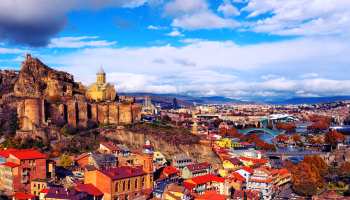SHOW GALLERY
In tsarist times Meidan was the site of Tbilisi’s bustling main bazaar. Today it’s busy with traffic but lined on two sides by restaurants and cafes, and it opens to the Metekhi Bridge over the Mtkvari – all overlooked by Narikala Fortress.
SHOW GALLERY
Sulfur baths are one of the major attractions of Tbilisi. The reason for this is the story of the city, according to which the king Gorgasali saw warm sulfur springs, gave the order on the construction of the new capital of his state at this place. Even the name of the city is translated as “warm”.
All baths are situated in the old town and placed on a “bathhouse” street.
There were also luxurious baths for the princess, baths for gentlemen and officers, and baths for local inhabitants.
The warm sulfurous bath – is a significant historic place, around which grew the present capital of Georgia – Tbilisi.
SHOW GALLERY
The National Botanical Garden of Georgia, formerly the Tbilisi Botanical Garden, is a research, cultural-educational and nature conservation institution in Georgia. Located in the foothills of Narikala Castle in Tbilisi, it occupies an area of 161 hectares and possesses a collection of over 4,500 plant groups.
The Garden’s collection contains flora from the Caucasus region, China , the Himalayas, Japan, North America , Turkey, Siberia and the Mediterranean.
The Garden’s history spans more than three centuries. It was first described in 1671 by the French traveler Jean Chardin and is thought to have been founded as a royal garden in 1625. The gardens were pillaged during the Persian invasion of 1795 but restored in the early 19th century and officially established as the Tiflis Botanical Garden in 1845.
